Irvine, North Ayrshire, Scotland, UK 作者: 来源: 发布时间:2021-07-28
I. Population and Area
Continent: Europe
Country: The U.K
State/Province: Scotland
City/Town: Irvine, North Ayrshire
Total Area: 341.9 (sq mi)
Population in 2018: 34.0 (thousand)
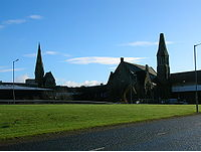
Reference Website:
https://www.google.com.hk/search?newwindow=1&safe=strict&ei=nTxpX-nCFPDO0PEP7a6lGA&q=population+of++Irvine%2C++North+Ayrshire&oq=population+of++Irvine%2C++North+Ayrshire&gs_lcp=CgZwc3ktYWIQA1Di1wFY4tcBYLLfAWgAcAB4AIABmgKIAZoCkgEDMi0xmAEAoAECoAEBqgEHZ3dzLXdpesABAQ&sclient=psy-ab&ved=0ahUKEwiphZ_JuPvrAhVwJzQIHW1XCQMQ4dUDCA0&uact=5
https://www.google.com.hk/search?newwindow=1&safe=strict&ei=sDxpX-eUHsqz0PEPrZeM-AM&q=total+area+of++Irvine%2C++North+Ayrshire&oq=total+area+of++Irvine%2C++North+Ayrshire&gs_lcp=CgZwc3ktYWIQA1D6lgFY-pYBYNibAWgAcAB4AIABoAKIAaIEkgEDMi0ymAEAoAECoAEBqgEHZ3dzLXdpesABAQ&sclient=psy-ab&ved=0ahUKEwjnrLDSuPvrAhXKGTQIHa0LAz8Q4dUDCA0&uact=5
II. Natural Geography (environment and resources)
Geography and climate
Irvine is situated in low lying Ayrshire overlooking Irvine Bay on the Firth of Clyde. It is a coastal town and lies approximately 25 miles (40 km) southwest of Glasgow. Most of the land in and around Irvine is very flat. Two rivers flow through the area, one being the River Irvine and the other being the Annick Water. The Annick Water is very popular for fishing. The area experiences relatively cool, wet summers and cold, wet winters, although snow in the area is not uncommon. Part of the reason why this part of Scotland is particularly mild is the influence from the sea air, with summer temperatures lower than their continental counterparts and only slightly warmer than their continental counterparts during the winter. Generally rainfall is plentiful throughout the year due to Atlantic weather systems sweeping in from the west. Snow is not rare in this part of Scotland and in many cases brings the area to a halt, like in 1995 and winter 2009/10.
Rail
Irvine is well served with numerous transport links. A railway station, originally built by the Glasgow and South Western Railway Company, is situated at the west end of the town which is on the main line between Stranraer and Glasgow. The railway company responsible for local routes is Abellio ScotRail who operate Saltire liveried Diesel and Electric Multiple units of the former Strathclyde Passenger Transport Executive. A comprehensive local bus network, coupled with frequent services to Ardrossan, Greenock, Kilmarnock, Ayr, Troon and Glasgow, is provided by Stagecoach West Scotland.
Road
There are two primary road crossings over the River Irvine, the more southerly of which has been criticised for some years. It is situated on the site of the former Irvine to Kilmarnock railway link which has long since been closed. The bridge over the river there has long been unsuitable for heavy traffic – being of a Bailey bridge design – which was constantly repaired over the years it existed. North Ayrshire Council announced plans to renew the bridge in a £2m investment which started in 2007, and was completed in 2010. Irvine is also well served by several arterial roads, namely the A78 (Greenock to Prestwick), A71 (Irvine to Kilmarnock and beyond to Edinburgh), A737 (through the Garnock Valley to Glasgow via the M8) and the A736 to Glasgow
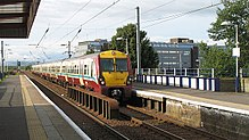
III. Economy
There are 10 Economic indicators in the Local Government Benchmarking Framework.
Economic Growth performance
Indicator Ref and Name | 2014/15 Value | 2015/16 Value | 2016/17 Value | 2017/18 Value | Scotland Value 2017/18 |
Econ1 Percentage of Unemployed People Assisted into work from Council Funded/ Operated Employability Programmes | 16.31 | 8.23 | 14.67 | 22.72 | 14.40 |
Econ2 Cost per planning application | 4719 | 4448 | 3859 | 4221 | 5087 |
Econ3 Average Time Per Commercial Planning Application | 6.07 | 5.31 | 6.49 | 5.71 | 9.34 |
Econ4 % of procurement spent on local small/ medium enterprises | 19.42 | 15.28 | 16.62 | 19.75 | 27.40 |
Econ5 No of | 20.96 | 15.43 | 22.37 | 22.39 | 16.83 |
Econ6 Cost of economic development & Tourism per 1,000 population | 108,014 | 133,821 | 128,211 | 147,323 | 91,779 |
Econ7 Proportion of people earning less than the living wage | 22.50 | 25.90 | 27.10 | 21.40 | 18.40 |
Econ8 Proportion of properties receiving superfast broadband | 65.00 | 0.00 | 88.00 | 92.35 | 91.13 |
Econ9 Town vacancy rates | 5.58 | NA | NA | 9.99 | 11.49 |
Econ10 Immediately available employment land as a % of land allocated for employment purposes in the local development plan | 5.73 | 7.22 | 7.19 | 63.03 | 40.78 |
Performance has improved as expected within the Council’s employability service as they reached full capacity in the final year of funding.
The cost per planning application has increased since 2016/17 however we continue to be below the national average. During this period the number of planning applications increased from 600 to 680 with the type and complexity of the applications varying significantly. Despite the increase in quantity, the average time per commercial planning application decreased and is well below the national average.
Reference Website:
https://www.north-ayrshire.gov.uk/council/performance-and-spending/benchmarking/economic-growth-performance.aspx
IV. Industrial Characterisitics
Major industries:
The new town, which is the retail centre of North Ayrshire, incorporates the historic burgh, a former coal-mining area, and an important “enterprise” area. Irvine’s industries include chemical manufacturing, engineering, and the life sciences sector. Several foreign firms have established operations there. The town’s coastal attractions and a branch of the Scottish Maritime Museum draw tourists.
The economy of mainland North Ayrshire reflects a contrast between the urbanized coastal plain and the more rural and agricultural interior. Agricultural activities include dairy farming and the cultivation of vegetable crops in the southern and eastern lowlands and hill sheep farming in the northern uplands. Along the coast there is a mix of industrial, commercial, and service activities; manufacturing has a strong presence, with notable paper milling, glass production, and pharmaceutical companies. Food and drink processing, particularly whisky distilling on the Isle of Arran, also represents a significant economic sector. Largs is a coastal resort known for its Viking heritage, and Ardrossan’s waterfront developments and ferry service draw visitors as well. Hunterston, near West Kilbride, is the site of a deepwater port, a nuclear power station, and wind turbine developments. As the commercial hub of North Ayrshire, the “new town” of Irvine supports a wide range of retail and manufacturing activities. Irvine is also the administrative centre of the council area. Area 342 square miles (885 square km).
Major projects and related introductions:
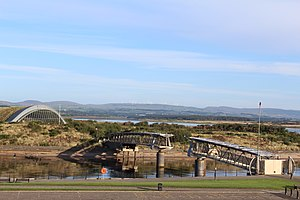
The Big Idea was a science centre located in the town of Irvine, North Ayrshire, Scotland. Located on the former Nobel Explosives manufacturing site on the Ardeer Peninsula, a new science and learning centre was planned in 2000 by the Millennium Commission, to celebrate the history of invention and inventors.
An estimated £14 million was spent for the construction of the exhibition. After only 3 years of operation, the museum permanently closed in 2003 after a major decline in visitor numbers. 16 years after closure, no plans have been made for the former museum's redevelopment and it continues to lie abandoned on the peninsula.
Reference Website:
https://www.britannica.com/place/North-Ayrshire#ref711887
https://www.britannica.com/place/Irvine-Scotland
V. Attractions
1. Irvine Beach:
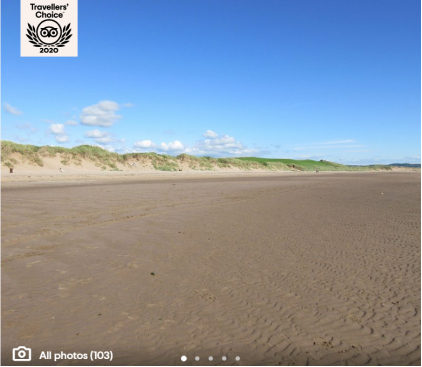
clean tidy beach greating walking on the sand or up in the dunes ,well used by dog walkers plenty of parking areas ,coastguard hut does teas and coffees etc nice place to take a sandwich ,book to relax in the car.
2. Eglinton Country Park:
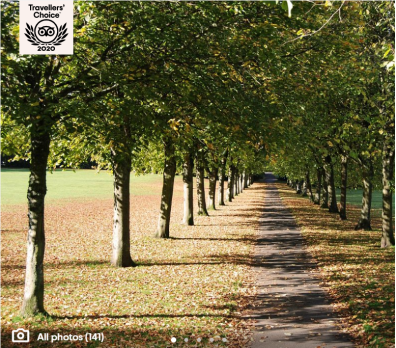
Love spending time here with my grankids as there us so much to see and do. Great for a walk and the play areas are decent for all ages of children with 2 separate play areas . If you in the area worth a visit.
3. Scottish Maritime Museum:
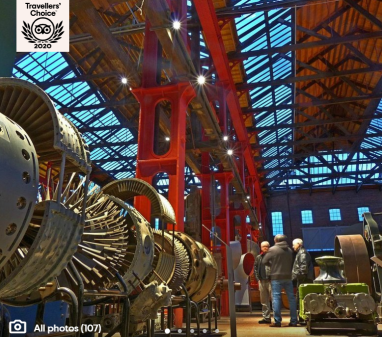
The Scottish Maritime Museum is based in the west of Scotland,with sites in Irvine and Dumbarton. At these two sites, the Museum holds an important nationally recognised collection, encompassing a variety of historic ships, artefacts, shipbuilding...more
Reference Website:
https://www.tripadvisor.co.uk/Attractions-g186560-Activities-Irvine_North_Ayrshire_Ayrshire_Scotland.html
VI. History
Prehistory
Part of modern Irvine contains the oldest continually inhabited village in Europe.Dreghorn, a separate village on the outskirts of Irvine, appears to contain archaeological remains dating back to the first incursions of humanity into Scotland (Mesolithic). Numerous ancient sites pepper the region. Iron Age Hill forts are abundant.
Middle Ages
The medieval parish of Irvine was one of the most important regions in Scotland. Originally the site of the Military Headquarters of the Lord High Constable of Scotland and one of the earliest Scottish Capitals, it served as an HQ to no fewer than three kings. King John I of Scotland inherited the lordship of Irvine sometime in the mid-13th century.Robert the Bruce, in an attempt to seize John's lands, made sure that he secured the town. From Bruce it passed to his grandson Robert the Steward, future King Robert II of Scotland.
Trindlemoss Loch
Trindlemoss Loch, Scotts Loch or the Loch of Irvine was situated in a low-lying area running from Ravenspark to near Stanecastle and down to Lockwards, now represented only by the playing fields off Bank Street. The loch was natural, sitting in a hollow created by glaciation. The loch waters were progressively drained and in 1691 this was finally achieved. The loch and its adjacent land was purchased by the Reverend Patrick Warner (minister in Irvine 1688–1702),who had sought refuge in the Netherlands after the Battle of Bothwell Bridge. It has been suggested that it was during this exile that he learned the skill of land reclamation.
Etymology
One interpretation of the placename is that it means 'green river' as in the Welsh river named Irfon. It has had many variants, such as Irwyn (1322), Ervin (1259) Irewin (1429–30), Irrvin (1528), and Irwin (1537). Another author lists Yrewin, c.1140; Irvin, c.1230; Orewin, c.1295, with a meaning of 'west flowing river.' "Eriwine" and "Erwinne" are also old English first names. A parish in Annandale in Dumfriesshire has the name Irving. In the 12th century a Gilchrist, son of Eruini, witnessed a charter in Galloway and this is the earliest use of the name so far discovered. However, the Tironesian Monks of Kilwinning dedicated their Abbey to St Finnian, and the Latinised version of this name is Vinninius from where we get Irvine (and indeed Southannan in Fairlie).
Harbour
The harbour for Irvine has a long history and once was one of the most prominent ports in Scotland after Glasgow. Across from the main harbour itself there was a terminal for the ICI-Nobel Explosives plant on the River Garnock. Much of the harbour went into decline in the 19th century when Glasgow, Greenock and Port Glasgow achieved higher prominence as sea ports. Despite this, there was still commercial sea traffic, though the harbour went into further decline in the 20th century. The main shipping in the 20th century was light coastal traffic and vessels destined for the Nobel Explosives facility. This facility had its own quay, which, although now disused, is still visible from Irvine Harbour. A shipyard on the River Irvine, the Ayrshire Dockyard Company, remained active until after World War II, though its last ship was built just prior to the war. Afterwards it was involved in refitting ships and also in the manufacture of fittings for other vessels including the Cunard liner Queen Elizabeth 2. Irvine Harbour is now officially closed as a commercial port and houses a small number of privately owned pleasure craft. It is also home to part of the Scottish Maritime Museum with numerous vessels on display, including the 'Spartan', one of the last surviving Clyde puffers.
Present day
As part of the Millennium celebrations, an exhibition known as The Big Idea opened in 2000. It was constructed on the north side of the River Irvine near the former Nobel quay. A footbridge from the harbour area was constructed, although it had to be able to open and close to still allow the small pleasure craft to pass. The Big Idea closed in 2003, due to low visitor numbers.
VII. Culture
The Irvine Burns Club
The Irvine Burns Club, originally formed in the Milne's Inn (now The Crown Inn) is now based in Wellwood House, Eglinton Street, and has an unbroken history dating back to 2 June 1826. The club had twelve founding members of whom five were known to Robert Burns, and two were once his close friends. The original minute of the meeting reads: "The subscribers agree hereby to form, and do now form ourselves into a Committee for the purpose of establishing a Club, or Society for Commemorating the birth of Robert Burns the Ayrshire Poet – and we agree to meet at an early day to get the preliminaries of the Club properly arranged."
VIII. Other information
Unlike most new towns which were either completely newly built or based around small villages, Irvine was already a sizeable town which had been a Royal Burgh since 1372. A quango, the Irvine Development Corporation (IDC), was set up in the 1960s to oversee the development of Irvine as Scotland's fifth new town. The Corporation subsumed the planning powers of the Royal Burgh of Irvine Town Council, Kilwinning Town Council and the Irvine Landward District Council. This involved massive and sometimes controversial development of the old parts of the town. Irvine was officially designated, in 1966, the fifth and last new town to be developed in Scotland and the only one to be located on the coast. The other Scottish 'new towns' were East Kilbride, Glenrothes, Cumbernauld and Livingston.
IDC was widely criticised for some of their actions including the demolition of large swathes of the Fullarton part of the town, the bridge and most of Bridgegate in 1972 and 1973. One positive development of IDC's was the Irvine Beach Park from 1975 and the Magnum Leisure Centre opened in 1976. This area, behind the harbour had been largely industrial wasteland for many years and was regarded as an eyesore. The area was developed with vast amounts of greenery making it a pleasant place to walk. IDC and the Urban Regeneration Company have plans to redevelop much of the waterfront area.Surrounding towns and villages along the coastline are included in a number of the regeneration proposals.
The provisions of The New Town (Irvine) Winding Up Order 1993 officially ended the New Town Designation on 31 December 1996. This marked the end of the Irvine Development Corporation and the return of full planning control of the area back to the local authority.
IX. Contact information
Mayor/Officer: Ian Clarkson
Tel: 01294 324131
Mail: committeeservices@north-ayrshire.gov.uk
Reference Website:
https://www.north-ayrshire.gov.uk/contact-us/committee-services.aspx
https://north-ayrshire.cmis.uk.com/north-ayrshire/Councillors/CurrentCouncillors.aspx
